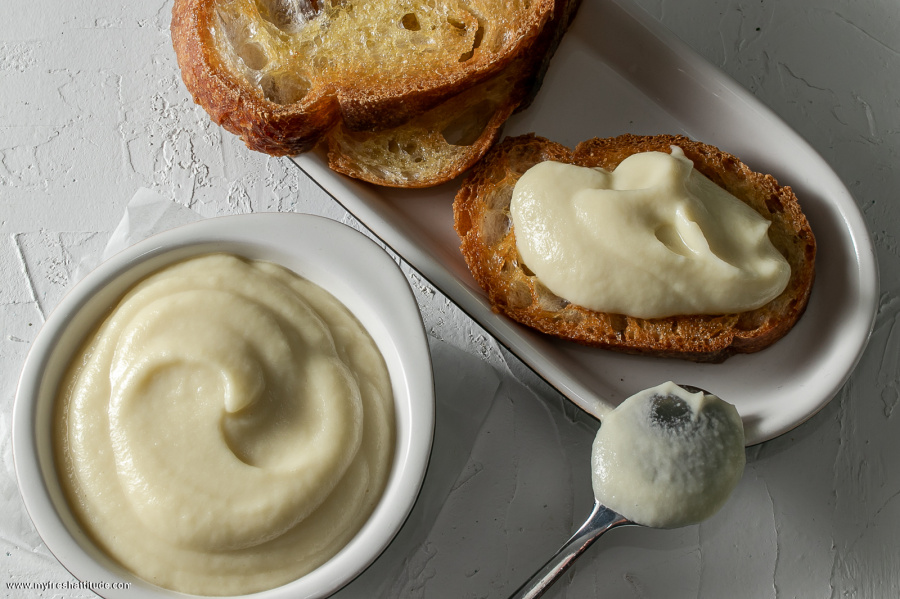
Accidental Aioli
This method for making a garlic purée was the most important cooking technique I learned while working in Italy.
I learned this method of cooking garlic while working in a fabulous Michelin-star-rated Ligurian restaurant called Locanda Miranda.
I began each day in the kitchen with a cup of espresso and a large pile of garlic bulbs. Sitting opposite the grandmother of this family-run restaurant and inn and working together, we separated the cloves from the dozen or so heads on the table, then carefully removed their peel. It was a painstaking task that consumed my first 30 minutes in the
Subscription Required For This Content
This method for making a garlic purée was the most important cooking technique I learned while working in Italy.
I learned this method of cooking garlic while working in a fabulous Michelin-star-rated Ligurian restaurant called Locanda Miranda.
I began each day in the kitchen with a cup of espresso and a large pile of garlic bulbs. Sitting opposite the grandmother of this family-run restaurant and inn and working together, we separated the cloves from the dozen or so heads on the table, then carefully removed their peel. It was a painstaking task that consumed my first 30 minutes in the kitchen.
Once peeled, I would gather the garlic cloves and place them in a pot of cold water. I allowed the water to boil, then strained the cloves and repeated the process five times. I popped the cooked cloves into a blender and added a bit of extra virgin olive oil (always an oil from Verona) and a good pinch of salt. We used the blended purée as a base for many of the fresh sauces we made a la minute during service.
Angelo, the Chef and one of my mentors, explained that Italians didn’t like a harsh-tasting garlic flavor in their food. That revelation was surprising as I always equated garlic with good Italian food. But as I learned from Angelo, who also spent many years working in the Provence, most diners find too much garlic hard to digest, creating an uncomfortable imbalance in life.
It was the first lesson I learned while working in Angelo’s kitchen – and the method and philosophy remain with me to this day.
I like using this purée in the same way as aioli in the Provence because it is essentially identical to a classic aioli preparation of pounded garlic, olive oil and salt…only milder. As I learned from Angelo, my accidental aioli works great as a base for many sauces. But I also use it to make dips by combining it with vegetable purées or in making soy sour cream or mayonnaise. And I must admit…my favorite way to use this garlic purée is to spread a bit of it on toast while it’s still a bit warm – and that’s getting very close to kitchen nirvana.
Difficulty: simple
Yield: 240 ml (about one cup)